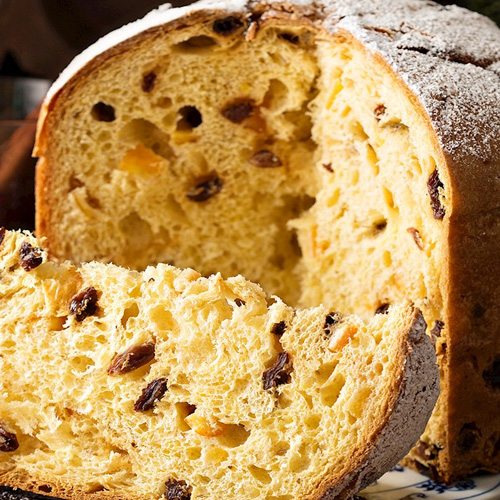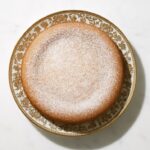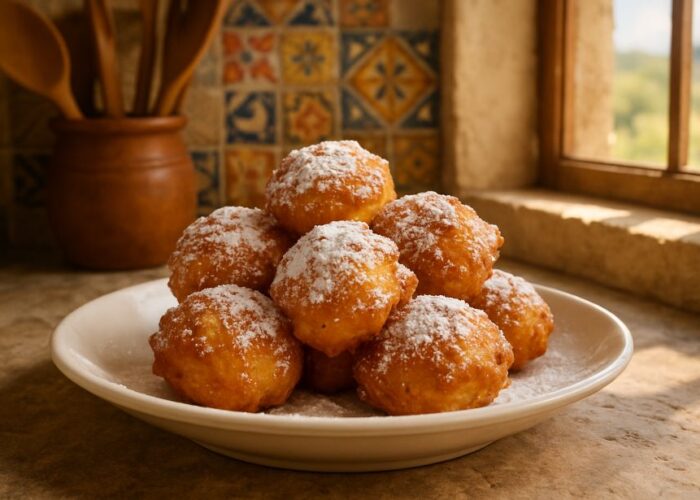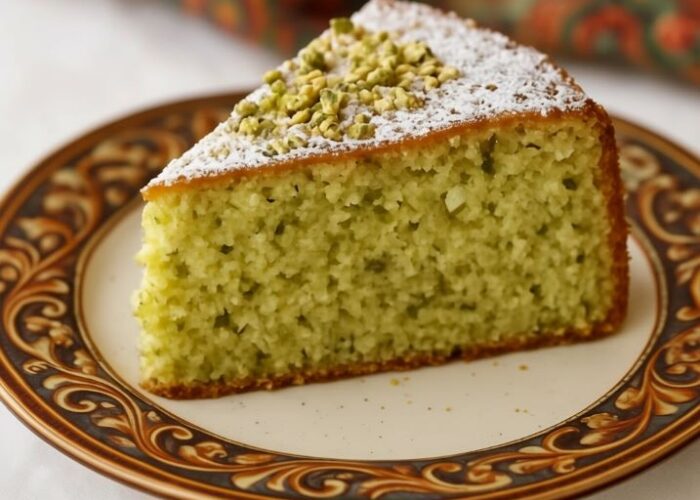Panettone: Italy’s Sweet Taste of Christmas
This tall, golden holiday loaf isn’t just dessert. Born in Milan, its story stretches back to the Middle Ages. One favorite legend tells of a young apprentice named Toni, who accidentally created the first version. His “pan di Toni,” or “Toni’s bread,” soon became a festive favorite.
In the past, it was considered a true luxury. Bakers enriched the dough with raisins, candied citrus, and other prized ingredients carried along bustling trade routes. Each slice felt like a celebration in itself.
Over time, the recipe grew into the airy, dome-shaped bread we know today. By the 20th century, large-scale baking brought it from Milanese tables to families around the world.
Now, this sweet loaf is more than a treat. It’s a symbol of celebration, indulgence, and centuries of Italian heritage, all shared during the holidays.
Starter
- 1 cup whole milk
- 1¾ cup all-purpose flour
- 2 tbsp active dry yeast
- 2 tbsp granulated sugar
Dough
- 4½ cups all-purpose flour
- 1 cup granulated sugar
- 1 cup chopped dried fruit
- ¼ cup candied orange rind
- ½ cup chopped pistachios nuts
- ½ cup chopped almond nuts
- ¼ cup raisins
- 1½ tsp vanilla extract
- 1 tbsp lemon zest
- 1 tbsp orange zest
- 1¼ tsp salt
- 2 tbsp brandy or dark rum
- 4 large eggs
- 2 large egg yolks
- 2½ sticks unsalted butter (softened)
- vegetable oil
Starter
Combine warm milk, yeast, flour, and sugar in a glass bowl, stirring to mix them thoroughly. Cover the bowl with plastic wrap and allow it to sit undisturbed until it is forming bubbles, approximately 30 minutes.
In a compact bowl, immerse the raisins in either rum or warm water, ensuring they are completely covered. Leave them aside for future use.
Dough
Begin by preheating the oven to 350°F (178°C).
Arrange the nuts on a baking sheet, lightly spritz them with water, and toast for approximately 10 minutes. Afterward, transfer the toasted nuts to a cutting board to cool, and then roughly chop them.
In a mixing bowl, blend together 1 teaspoon of salt, flour, lemon and orange zest, candied orange peel, dried fruit, nuts, rasins, rum, and vanilla extract.
Using the bowl of an electric mixer equipped with a paddle attachment, beat the butter and sugar at medium speed for approximately 2 minutes, or until the mixture becomes fluffy. Add the eggs and egg yolks and beat thoroughly.Reduce the mixer's speed to low, and gradually introduce the flour mixture, mixing only until everything is combined. Gradually incorporate the starter into the mixture while continuing to beat on low speed until all the ingredients are fully integrated. The dough should not be overly sticky and should have a buttery appearance. Place the dough onto a lightly floured surface and knead it for approximately 2 minutes. The dough will become smooth. Next, transfer the kneaded dough into an oiled bowl, cover it, and allow it to rise in a warm location until it has doubled in size, which should take about 1½ hours.
After the dough has completed its initial rise, it's time to place it in your greased panettone pan (7 inches tall) or use a paper panettone mold. Allow the dough to undergo a second rising in the pan or mold for an additional hour. Make sure to cover it with both plastic wrap and a towel during this period.In a small bowl, beat an egg. Then, brush the egg wash onto the surface of your panettone dough. Preheat your oven to 360°F (182°C).
Uncover the panettone and bake for approximately 45 minutes. The panettone is ready when a wooden skewer inserted into the center of the loaf comes out clean.
Allow the panettone to cool in the molds for 15 minutes. Afterward, carefully remove the loaves from the molds or pans and transfer them to wire racks to cool completely. Once cooled, dust the panettone with confectioners' sugar.
Paper Mold
Traditional panettone is baked in a tall, round, corrugated paper mold. These molds are oven-safe, greaseproof, and sturdy enough to support the dough as it rises sky-high. Unlike a metal pan, the paper allows for even baking and airflow while giving the loaf its classic look.
You can buy panettone molds online, in specialty baking shops, or even in some Italian grocery stores during the holiday season.
Variations
While the classic version is filled with raisins and candied citrus, bakers love to put their own spin on panettone. Here are some popular twists:
Chocolate Panettone – Rich chocolate chunks or chips replace dried fruit for a more decadent loaf.
Nut Lover’s Panettone – Almonds, hazelnuts, or pistachios add crunch and extra flavor.
Liqueur-Infused Panettone – A splash of amaretto, brandy, or limoncello makes the bread even more festive.
Savory Panettone – In some regions, panettone is baked without sugar and filled with cheese, ham, or olives—perfect for pairing with wine.
Storage
Panettone stays fresh for about 5 to 7 days at room temperature if kept well wrapped. Store it in its original bag or wrap it tightly in plastic and foil to keep it soft.
For longer storage, you can freeze it for up to 3 months. Slice it first, wrap each piece in plastic, and place them in a freezer bag or airtight container. This way, you can enjoy a slice whenever you like—just thaw at room temperature or warm it gently in the oven for that fresh-baked feel.
Like this:
Like Loading...













